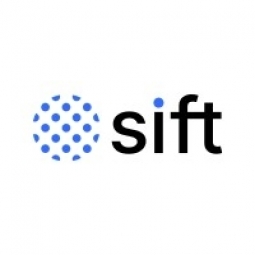Customer Company Size
Large Corporate
Region
- America
- Pacific
Country
- United States
- Australia
- Canada
Product
- Sift’s Payment Protection
Tech Stack
- iOS app
- Desktop site
Implementation Scale
- Enterprise-wide Deployment
Impact Metrics
- Cost Savings
- Productivity Improvements
Technology Category
- Cybersecurity & Privacy - Application Security
Applicable Industries
- Food & Beverage
- Retail
Applicable Functions
- Business Operation
- Sales & Marketing
Use Cases
- Fraud Detection
Services
- Cybersecurity Services
About The Customer
DoorDash is a technology company that connects people through delivery. It enables merchants to reach consumers via delivery, providing Dashers (delivery people) with the freedom and flexibility to work when they want, while empowering restaurants to reach a greater pool of customers. Operating in the US, Canada, and Australia, DoorDash has both a desktop site and a mobile app, with most traffic coming through the iOS app. However, the company was facing significant challenges with fraudsters who were exploiting the app, using stolen credit cards and reselling DoorDash as a service illegally.
The Challenge
DoorDash, a technology company that enables merchants to reach consumers via delivery, was facing a significant challenge with fraudsters. These fraudsters were using stolen credit cards and reselling DoorDash as a service illegally. They would advertise online through various platforms, claiming to be selling DoorDash at a significant discount and convincing consumers to make purchases through them. This left DoorDash in a position of having to reimburse the victim (either directly or via chargeback) whose credit card was stolen after the victim disputed the charge. DoorDash was also experiencing chargebacks due to the charges on those stolen credit cards, and their rules-based fraud prevention needed to be regularly updated to stave them off, consuming time and resources. In these early days of DoorDash, no automation was in place and most fraud prevention was done via manual review. DoorDash needed a solution that could proactively detect and prevent these fraudsters before they could make it onto the platform to do damage.
The Solution
Without enough manpower or bandwidth to build a fraud prevention tool internally, DoorDash’s Risk team turned to Sift’s Payment Protection product to ensure the integrity of their community. DoorDash chose Sift over other fraud prevention vendors because of the sheer amount of customers Sift works with across a number of industries. Following integration, DoorDash started to see significant, impactful results. Using the Network view, DoorDash’s Risk team can see how many users on the platform are connected, enabling quick identification and removal of colluding fraudsters or fraudsters using multiple accounts. And on the Analyze page, they’re regularly reviewing their fraud-fighting strategy, testing their existing rules, and making new ones by leveraging the analytics available on the page. Via Workflows, the team automated the labeling of fraudulent-looking users who initiate chargebacks (used in tandem with information they receive from their third-party payments processor). The user is prevented from returning to the platform, and the machine learning model recognizes that fraudulent behavior in other users.
Operational Impact
Quantitative Benefit

Case Study missing?
Start adding your own!
Register with your work email and create a new case study profile for your business.
Related Case Studies.

Case Study
The Kellogg Company
Kellogg keeps a close eye on its trade spend, analyzing large volumes of data and running complex simulations to predict which promotional activities will be the most effective. Kellogg needed to decrease the trade spend but its traditional relational database on premises could not keep up with the pace of demand.

Case Study
HEINEKEN Uses the Cloud to Reach 10.5 Million Consumers
For 2012 campaign, the Bond promotion, it planned to launch the campaign at the same time everywhere on the planet. That created unprecedented challenges for HEINEKEN—nowhere more so than in its technology operation. The primary digital content for the campaign was a 100-megabyte movie that had to play flawlessly for millions of viewers worldwide. After all, Bond never fails. No one was going to tolerate a technology failure that might bruise his brand.Previously, HEINEKEN had supported digital media at its outsourced datacenter. But that datacenter lacked the computing resources HEINEKEN needed, and building them—especially to support peak traffic that would total millions of simultaneous hits—would have been both time-consuming and expensive. Nor would it have provided the geographic reach that HEINEKEN needed to minimize latency worldwide.

Case Study
Improving Production Line Efficiency with Ethernet Micro RTU Controller
Moxa was asked to provide a connectivity solution for one of the world's leading cosmetics companies. This multinational corporation, with retail presence in 130 countries, 23 global braches, and over 66,000 employees, sought to improve the efficiency of their production process by migrating from manual monitoring to an automatic productivity monitoring system. The production line was being monitored by ABB Real-TPI, a factory information system that offers data collection and analysis to improve plant efficiency. Due to software limitations, the customer needed an OPC server and a corresponding I/O solution to collect data from additional sensor devices for the Real-TPI system. The goal is to enable the factory information system to more thoroughly collect data from every corner of the production line. This will improve its ability to measure Overall Equipment Effectiveness (OEE) and translate into increased production efficiencies. System Requirements • Instant status updates while still consuming minimal bandwidth to relieve strain on limited factory networks • Interoperable with ABB Real-TPI • Small form factor appropriate for deployment where space is scarce • Remote software management and configuration to simplify operations

Case Study
Energy Management System at Sugar Industry
The company wanted to use the information from the system to claim under the renewable energy certificate scheme. The benefit to the company under the renewable energy certificates is Rs 75 million a year. To enable the above, an end-to-end solution for load monitoring, consumption monitoring, online data monitoring, automatic meter data acquisition which can be exported to SAP and other applications is required.

Case Study
Coca Cola Swaziland Conco Case Study
Coco Cola Swaziland, South Africa would like to find a solution that would enable the following results: - Reduce energy consumption by 20% in one year. - Formulate a series of strategic initiatives that would enlist the commitment of corporate management and create employee awareness while helping meet departmental targets and investing in tools that assist with energy management. - Formulate a series of tactical initiatives that would optimize energy usage on the shop floor. These would include charging forklifts and running cold rooms only during off-peak periods, running the dust extractors only during working hours and basing lights and air-conditioning on someone’s presence. - Increase visibility into the factory and other processes. - Enable limited, non-intrusive control functions for certain processes.








